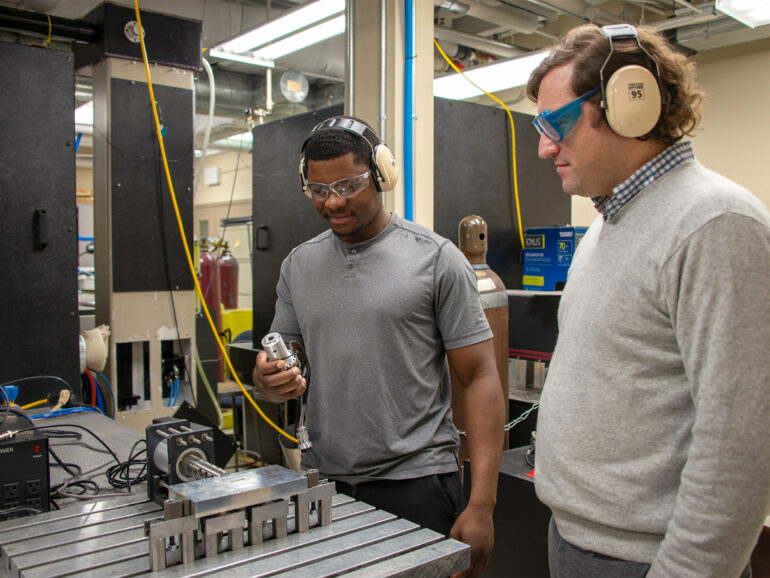Manually shaking or vibrating molten metal using ultrasonic waves helps reduce air bubbles, cracks and grain sizes in a finished metal part. Metal 3D printing researchers hypothesized that vibrations were the key to increasing quality, but until now, the mechanisms were not well understood.
Using high-energy X-ray imaging, a team of researchers led by Christopher Kube, associate professor of engineering science and of acoustics in the Penn State College of Engineering, captured footage of a cross-section of liquid metal as it cooled.
Their results confirmed longstanding hypotheses in the field that through local pressure changes, ultrasonic vibrations encourage air bubbles to increase in number, enlarge, migrate to the surface of a melt pool and pop.
Sonication, or vibration by ultrasound, also increases the speed that metal cools, which helps suppress additional bubbles from forming. The team published their findings in Communications Materials.
“Metal additive manufacturing has inherent constraints on part quality due to the process,” Kube said. “Our work aims to alleviate these constraints by utilizing external forces like ultrasound to afford better control of the process, leading to higher quality and better performing parts.”
To arrive at their findings, collaborators from the Advanced Photon Source at the Argonne National Laboratory used high-energy synchrotron X-ray imaging of an aluminum alloy sample as it was simultaneously melted by a laser and sonicated by an ultrasonic transducer.
Unlike the type of X-ray used at the doctor’s office, synchrotron X-ray can pass through metal and image hundreds of thousands of frames per second to see changes inside the materials very quickly, Kube explained.
The result was an X-ray video with direct visualization of the bubble behavior. Kube’s lab then corroborated the results through computational fluid dynamics simulations. Lovejoy Mutswatiwa, doctoral student in engineering science and mechanics at Penn State and first author on the paper, explained that the faster metal is solidified, the smaller the grain size will be.
“Grain size can affect a material’s performance, including corrosion resistance, strength, toughness, ductility and bending,” Mutswatiwa said. “Finer grain size allows a metal to be stronger and hold up under pressure.”
The experimental setup—a single laser melting a tiny point—allowed the researchers to infer what happens when the laser melts at points along a prescribed path, according to Mutswatiwa.
“If we understand the process at a small scale, it’s easy to apply to the whole additive manufacturing process,” Mutswatiwa said. “These results could also help us integrate more alloys into the additive manufacturing process.”
Currently, over 10,000 alloys are used in conventional manufacturing, but less than 10% of them can be used in additive manufacturing due to problems with porosity and cracking, Mutswatiwa explained.
“We are trying to increase the number of alloys we can print with while maintaining the quality of conventional manufacturing,” he said. “Though still a highly experimental technology, using ultrasound in metal manufacturing is showing promise to help avoid defects in metal.”
Kube’s team was recently awarded a three-year grant to extend the ultrasonic technique into a large-scale additive process known as gas metal wire arc additive manufacturing. The project aims to transition the technique from a fundamental investigation to real applications to help manufacturing efforts in the U.S. Navy’s nuclear fleet.
“We proved at a small scale that ultrasound can impact melt pools in additive manufacturing,” Kube said. “Our next step is to positively leverage the impact to help the Navy produce higher quality and better performing parts.”
More information:
Lovejoy Mutswatiwa et al, High-speed synchrotron X-ray imaging of melt pool dynamics during ultrasonic melt processing of Al6061, Communications Materials (2024). DOI: 10.1038/s43246-024-00584-3
Provided by
Pennsylvania State University
Citation:
Bubbling up: Uncovering melt pool dynamics in metal manufacturing (2024, September 26)



